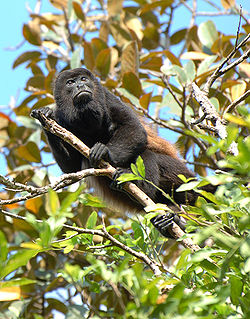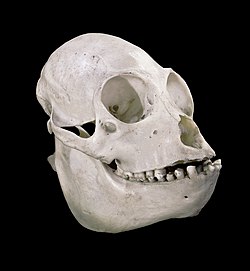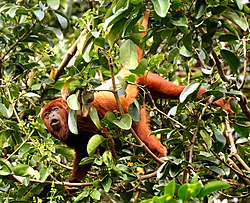| Howler monkeys [1] | |
|---|---|
 | |
| Mantled howler monkey female and baby | |
| Scientific classification | |
| Kingdom: | Animalia |
| Phylum: | Chordata |
| Class: | Mammalia |
| Order: | Primates |
| Family: | Atelidae |
| Subfamily: | Alouattinae Trouessart, 1897 (1825) |
| Genus: | Alouatta Lacépède, 1799 |
| Type species | |
| Simia belzebul (= Alouatta belzebul) Linnaeus, 1766 | |
| Species | |
See text | |
 | |
| Alouatta distribution | |
| Synonyms | |
| |
Howler monkeys (genus Alouatta, monotypic in subfamily Alouattinae) are the most widespread primate genus in the Neotropics and are among the largest of the platyrrhines along with the muriquis (Brachyteles), the spider monkeys (Ateles) and woolly monkeys (Lagotrix). The monkeys are native to South and Central American forests. They are famous for their howls, which can be heard from a distance through dense rain forest. [2] Fifteen species are recognized. Previously classified in the family Cebidae, they are now placed in the family Atelidae. They are primarily folivores but also significant frugivores, acting as seed dispersal agents through their digestive system and their locomotion. Threats include human predation, habitat destruction, illegal wildlife trade, and capture for pets or zoo animals.




















